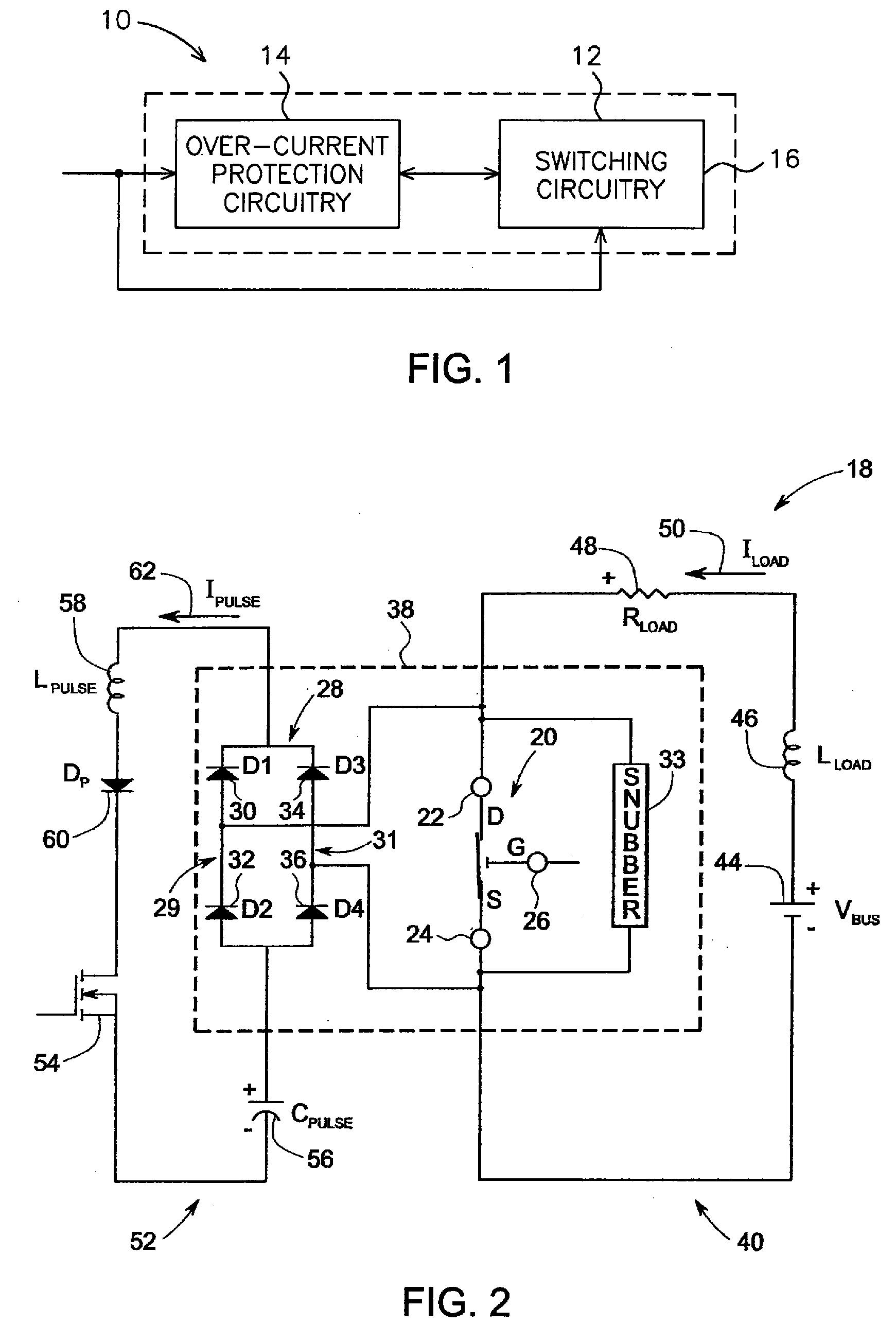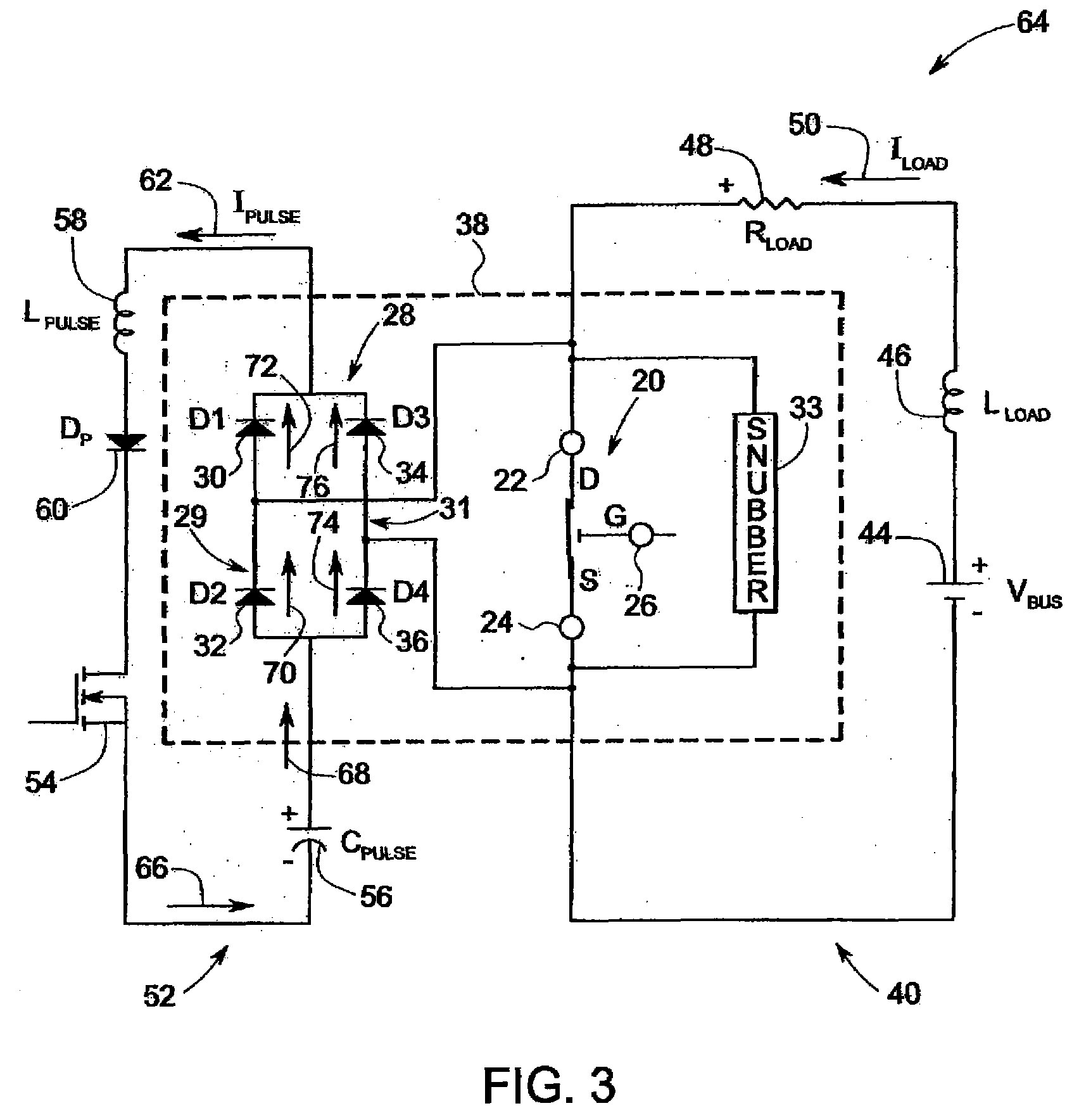Micro-Electromechanical System Based Electric Motor Starter
a micro-electromechanical system and starter technology, applied in the field of micro-electromechanical system based starter technology, can solve the problems of components increasing the size of the circuit breaker, damage or overheating the equipment, and over-design having little effect on the level of short circuit curren
- Summary
- Abstract
- Description
- Claims
- Application Information
AI Technical Summary
Benefits of technology
Problems solved by technology
Method used
Image
Examples
exemplary embodiment 96
[0059]FIG. 6 illustrates an exemplary embodiment 96 wherein the switching circuitry 12 (see FIG. 1) may include multiple MEMS switches arranged in a series or series-parallel array, for example. Additionally, as illustrated in FIG. 6, the MEMS switch 20 may replaced by a first set of two or more MEMS switches 98, 100 electrically coupled in a series circuit. In one embodiment, at least one of the first set of MEMS switches 98, 100 may be further coupled in a parallel circuit, where the parallel circuit may include a second set of two or more MEMS switches (e.g., reference numerals 100, 102). In accordance with aspects of the present invention, a static grading resistor and a dynamic grading capacitor may be coupled in parallel with at least one of the first or second set of MEMS switches.
exemplary embodiment 104
[0060]Referring now to FIG. 7, an exemplary embodiment 104 of a graded MEMS switch circuit is depicted. The graded switch circuit 104 may include at least one MEMS switch 106, a grading resistor 108, and a grading capacitor 110. The graded switch circuit 104 may include multiple MEMS switches arranged in a series or series-parallel array as for example illustrated in FIG. 6. The grading resistor 108 may be coupled in parallel with at least one MEMS switch 106 to provide voltage grading for the switch array. In an exemplary embodiment, the grading resistor 108 may be sized to provide adequate steady state voltage balancing (division) among the series switches while providing acceptable leakage for the particular application. Furthermore, both the grading capacitor 110 and grading resistor 108 may be provided in parallel with each MEMS switch 106 of the array to provide sharing both dynamically during switching and statically in the OFF state. It may be noted that additional grading r...
PUM
 Login to View More
Login to View More Abstract
Description
Claims
Application Information
 Login to View More
Login to View More - R&D
- Intellectual Property
- Life Sciences
- Materials
- Tech Scout
- Unparalleled Data Quality
- Higher Quality Content
- 60% Fewer Hallucinations
Browse by: Latest US Patents, China's latest patents, Technical Efficacy Thesaurus, Application Domain, Technology Topic, Popular Technical Reports.
© 2025 PatSnap. All rights reserved.Legal|Privacy policy|Modern Slavery Act Transparency Statement|Sitemap|About US| Contact US: help@patsnap.com



